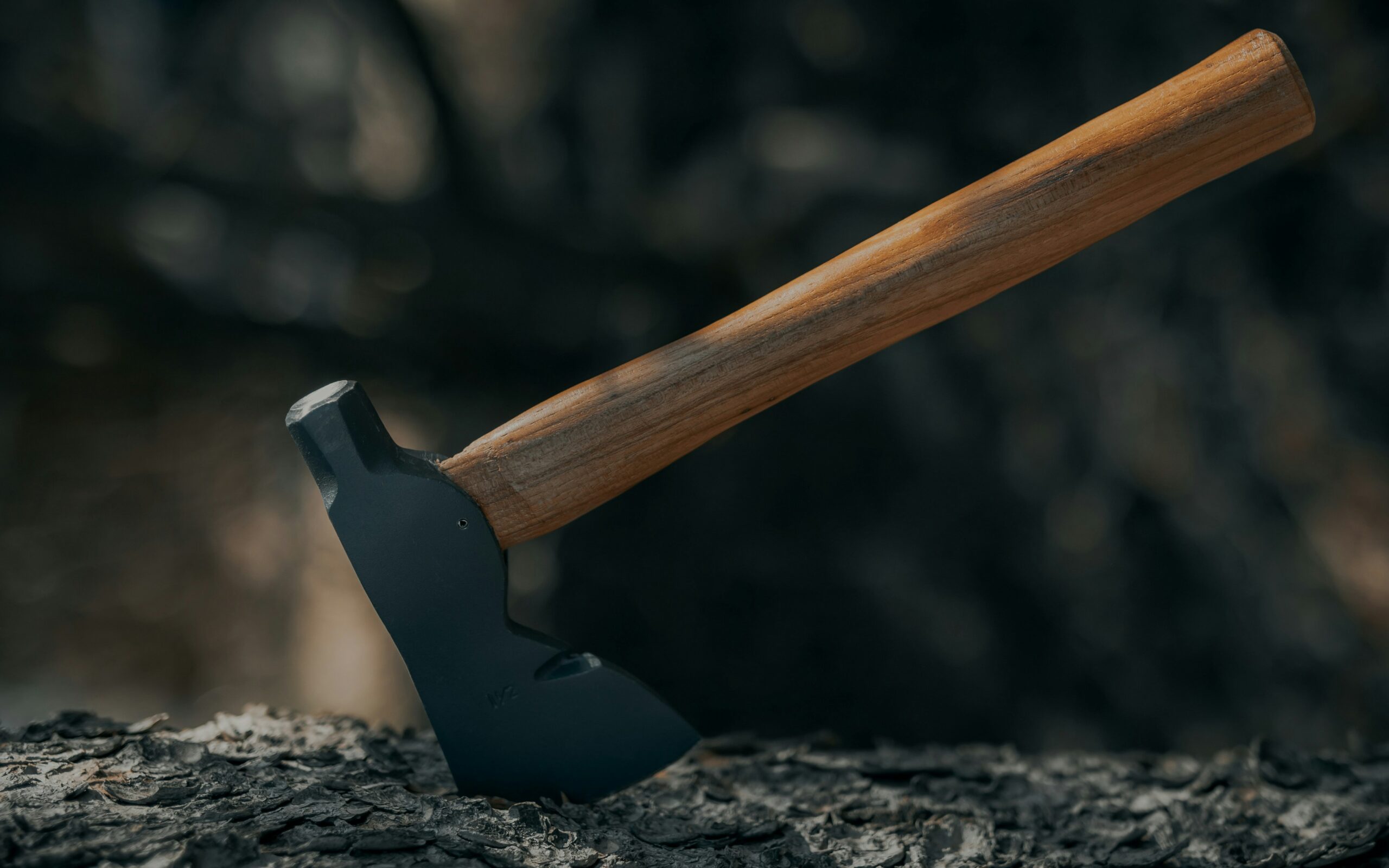Many people struggle to achieve consistent results in axe throwing, especially when aiming for the bullseye in tournaments. Understanding the proper axe-throwing grip techniques is essential for success.
This post will explore the basics of axe throwing grips, covering the two-handed and one-handed grip techniques. Readers will discover how grip stability and strength can improve their throwing angle and rotation, helping them hit their target.
By the end, readers will feel more confident in their ability to throw axes effectively and safely, overcoming common challenges in the sport.
Key Takeaways
- A proper grip is crucial for accurate and safe axe-throwing
- A relaxed yet firm grip improves control and muscle memory during throws
- Selecting the right axe enhances wrist control and overall performance
- Practicing grip techniques leads to consistent accuracy and technique improvement
- Safety measures, like using protective gear, are essential during axe-throwing practice
Understanding the Basics of Axe Throwing Grips

A proper grip is essential for success in axe throwing. It influences accuracy, safety, and overall skill. There are several common grip styles to consider, including how hand length and finger positioning play a role. This section will also cover selecting the right axe to match your grip and highlight frequent mistakes to avoid.
Importance of a Proper Grip in Axe Throwing
A proper grip is vital in axe throwing as it directly affects how well a person can throw the weapon with accuracy. When holding the handle, the forearm should align with the axe to maintain control and create proper momentum during the throw.
A firm grip on the hatchet enhances the chances of hitting the target, reducing the risk of injury, and increasing overall performance in the sport. Mastering basic axe throwing grip techniques can significantly improve accuracy and safety.
How Grip Affects Accuracy and Safety
The grip on the axe greatly influences both accuracy and safety in axe throwing. When a person maintains a firm grip, it promotes better muscle memory, allowing for consistent motion with each throw. This control not only helps in hitting the target made of wood but also reduces the risk of accidents, as a well-positioned hand and arm support a smoother release of the axe.
Avoiding Common Grip Mistakes
Avoiding common grip mistakes is essential for improving performance in axe throwing. One frequent error is holding the axe too tightly, which can lead to muscle fatigue and inconsistent throws. Instead, maintaining a relaxed grip while keeping the fingers firmly wrapped around the handle allows for a smoother release and better accuracy. By focusing on these important grip techniques, throwers can enhance their skills and enjoy the sport more safely.
Mastering the Two-Handed Grip Technique

The two-handed grip technique is essential for effective axe-throwing grip techniques. In this guide, you’ll learn how to properly place your hands, position your fingers, and find the optimal grip pressure for better control.
Additionally, we’ll explain how to align your stance with your grip, offering tips for practicing throws to enhance your skills. Mastering these elements will significantly improve both your accuracy and overall performance in axe throwing.
Step-by-Step Guide to the Two-Handed Grip
To master the two-handed grip technique in axe throwing, it’s essential to begin with correct hand placement. Start by gripping the axe handle with your dominant hand, ensuring your thumb wraps securely around the side for a firm hold.
Then, place your non-dominant hand above the dominant hand, aligning both for optimal control and stability. This grip technique not only enhances control but also boosts accuracy and confidence during each throw, making it a foundational step in improving your axe throwing skills.
Hand Placement and Finger Positioning
Hand placement and finger positioning are key to mastering the two-handed grip in axe throwing. The dominant hand should grip the axe handle firmly, with the fingers wrapped securely around it and the thumb providing support along the side.
Next, place the non-dominant hand above the dominant hand, ensuring both hands are aligned for an effective transfer of energy during the throw. This proper hand placement helps maintain control and stability, enhancing accuracy and reducing the risk of slips or accidents.
Finding the Optimal Grip Pressure
Finding the optimal grip pressure in axe throwing is crucial for consistent throws. The key is to find a balance—gripping too loosely makes the axe feel unstable and increases the risk of inaccurate throws while gripping too tightly can lead to muscle fatigue, jerky movements, and reduced accuracy. A firm yet relaxed grip is ideal, as it allows for better control, stability, and a smooth release, ultimately leading to more accurate and consistent throws.
Practicing Throws With the Two-Handed Grip
Practicing throws with the two-handed grip is essential for developing consistency and accuracy in axe throwing. Throwers should begin by focusing on maintaining a balanced stance and a relaxed grip pressure, ensuring proper body alignment.
Regular practice allows for refining muscle memory, making it easier to replicate successful throws consistently and safely, which ultimately enhances overall performance in the sport.
Developing Proficiency With the One-Handed Grip

The one-handed grip is valuable for specific techniques in axe throwing, and knowing when to use it is crucial for success. This section covers the detailed steps for executing the one-handed grip, focusing on balancing control and power while adjusting for different axe weights. Practicing drills is also recommended to build confidence and improve skills with this grip.
When to Use the One-Handed Grip
The one-handed grip is ideal for situations that require quick throws or when using a lighter axe. This technique proves especially useful in competitive settings where speed is essential or when the thrower needs to adjust their grip quickly in a dynamic environment. The one-handed grip is best suited for throwers who feel confident in their aim and wish to deliver a swift, effective throw.
Adjusting for Different Axe Weights
Adjusting for different axe weights is important for effective axe throwing with a one-handed grip. A lighter axe allows for quicker throws, while a heavier axe demands more grip strength and control. By recognizing whether the axe feels light or heavy in hand, throwers can adapt their grip pressure—relaxing the grip for lighter axes and tightening it for heavier ones. Regular practice with axes of varying weights helps build confidence and refine technique for more consistent and accurate throws.
Drills to Enhance One-Handed Grip Skills
To enhance one-handed grip skills in axe throwing, throwers can practice simple drills that focus on grip strength and accuracy. One effective drill involves standing at a target and repeatedly throwing with just the dominant hand, focusing on grip pressure and release technique.
Another useful exercise is to practice with a lighter axe to develop speed and confidence, allowing the thrower to gradually adjust their grip for heavier axes over time. These drills help build the necessary strength, precision, and adaptability for effective axe throwing.
Enhancing Grip Stability and Strength

Improving grip stability and strength is essential for successful axe throwing. This section will cover exercises that enhance hand and wrist strength, the benefits of using grip enhancers and gloves, and techniques to maintain a consistent grip in different conditions. It will also address the importance of maintaining the axe handle and include stretching and warm-up routines for hands.
Exercises to Improve Hand and Wrist Strength
Improving hand and wrist strength is crucial for mastering axe-throwing grip techniques. Simple exercises like wrist curls, hand squeezes, and finger extensions can help build the strength and stability needed for a firm grip. By incorporating these exercises into a regular routine, throwers can achieve better accuracy and control during throws, enhancing their overall performance.
Techniques for Consistent Grip Under Various Conditions
Maintaining a consistent grip in different conditions is essential for successful axe throwing. Weather changes, such as rain or humidity, can impact grip, making it important for throwers to adapt their techniques.
Using a grip enhancer or wearing gloves can help improve traction and reduce slippage, ensuring better control during throws. By adjusting grip techniques to suit the weather, throwers can stay focused on accuracy and form, regardless of the conditions.
Maintaining Your Axe Handle for Better Grip
Maintaining the axe handle is essential for ensuring a secure grip during throwing. Regularly checking for wear and tear on the handle helps prevent slippage and ensures that throwers maintain control. Applying a coat of wood conditioner or oil can keep the handle smooth and free from splinters, enhancing grip stability:
- Regularly inspect the axe handle for damage.
- Use a wood conditioner to keep it smooth.
- Avoid using a handle with splinters to ensure a firm grip.
Conclusion
Mastering basic axe-throwing grip techniques is essential for achieving accuracy and control in throws. A proper grip not only enhances performance but also significantly reduces the risk of injury.
By understanding different grip styles and practicing consistently, throwers can improve their skills and confidence. Prioritizing axe-throwing grip techniques leads to a more enjoyable and safer axe-throwing experience, making it a vital aspect of the sport.

